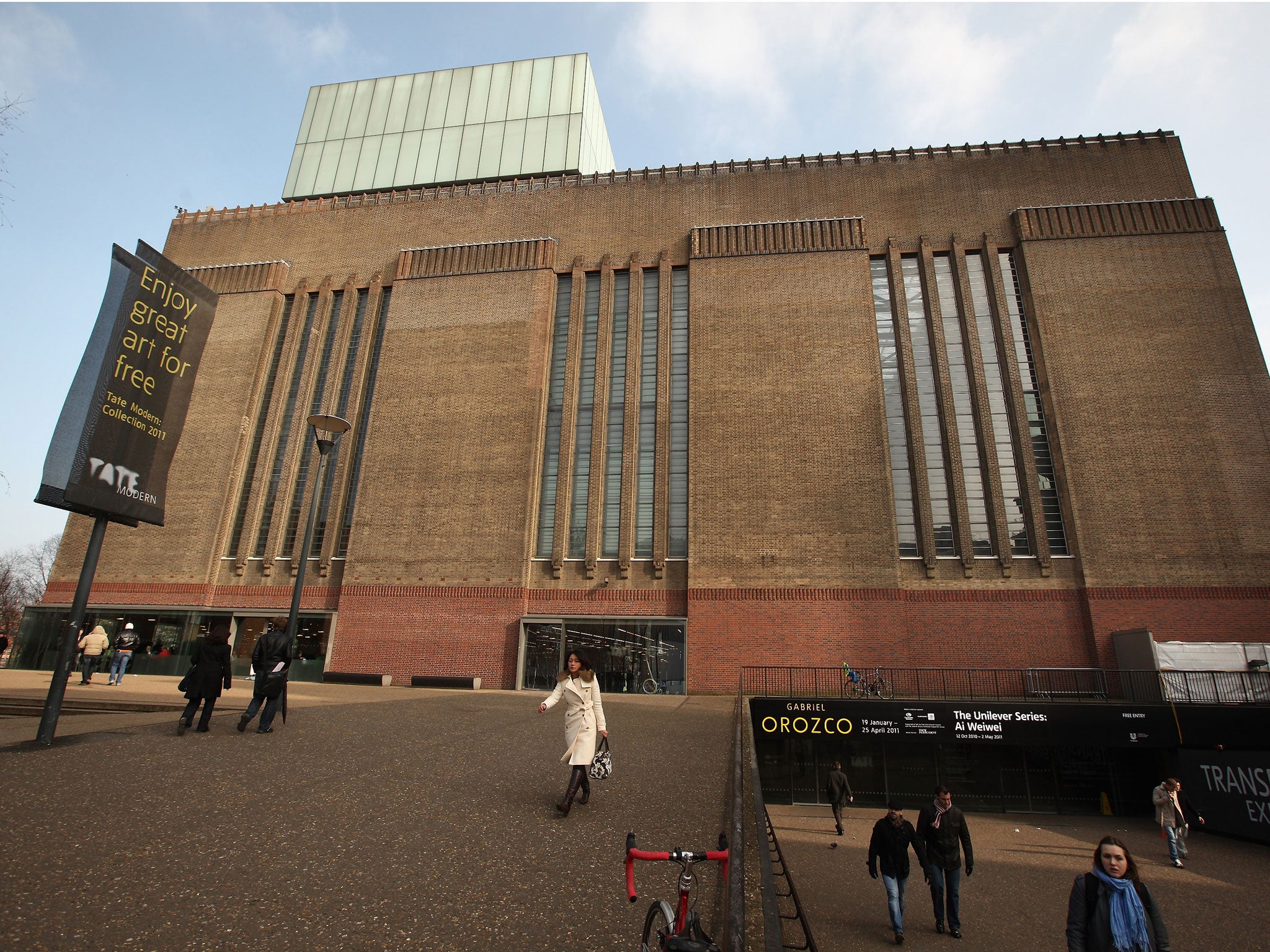So Tate Modern's had 5.3m visitors, but do gallery visitor numbers really add up to all that much?
Plus: My nomination for best non-snub and the people of Les Misérables are revolting

What does it actually mean that Tate Modern attracted 5.3 million visitors in 2012, reportedly up 9.5 per cent on the previous year? In one sense, it's a relatively easy question to answer. It means 5.3 million visits, because Tate Modern collect the figures with a digital sensor at the entrances (as approved by DCMS, they're keen to make clear). So, if you went more than once last year give yourself a pat on the back. You've done your bit to push up their numbers. If you shilly-shallied about in the doorway, went out and came back in again, you've probably helped as well. But there's another sense in which it's a lot harder to answer the question. This statistic is, naturally, presented as an uncomplicated good. If you were to analyse it as a vital sign of cultural health you'd be hard pressed to argue that the patient was in trouble. Art galleries are a good thing and a full art gallery is better than an empty one. So this evidence of increased footfall (either through more visitors or more return visits) is the equivalent of good quarterly results from a high street store. Business is good and there is increasing demand for the product on offer.
The trouble is that, setting aside Tate Modern's excellent bookshop, and its more debatable exhibition shops, what's on offer inside this building is far more intangible than any high-street product. A visit to Selfridges isn't a terribly complicated thing when it comes to the accountancy of consummation. There's something you want to buy. If they have it and the price is right, you do. If they don't you look somewhere else – without, I'm guessing, any overwhelming feeling of existential emptiness.
But it's far harder to say whether a visit to an art gallery has reached a satisfactory conclusion. What is it you're looking for in the first place, for one thing. Diversion? Transcendence? A holiday from language? And how can you really tell if you've got what you wanted? My own experience of going to galleries would suggest that as often as you come away feeling elated and enlarged you come away diminished by the experience – because the work isn't very good or because you just can't see what everybody else claims to. This isn't a reason for not going to art galleries. It wouldn't be art if the effects were guaranteed. But it does mean that that 9.5 per cent increase in the figures doesn't easily correlate to an enlargement of the national contentment or refinement or sensibility.
There's also the possibility that a visit to Tate Modern has become its own fulfilment. It may not be a means to an end, the way you finally get to see an artwork you've previously admired only in reproduction or surprise yourself with paintings you'd never seen before. It may be the end in itself, a ticked-off box on a tourist itinerary.
And that possibility is actually increased the more people visit. Where do tourists generally go? Where tourists before them have gone. There's no need to be unduly snobbish about this process either, unless we're talking about Madame Tussauds; education and inspiration are accidental as often as they are planned. But it's worth remembering that every million extra visitors a gallery gets may well be accompanied by a matching dilution of the collective looking and thinking actually done in that building. Another way of saying this is that not all visits are equal, an elitist affront to democratic notions of open access but self-evidently true for all that (just visit Tate Modern if you doubt it). So I'm not sure, in the end, what that figure means – only that simple numbers probably aren't the best way to measure the success of any cultural institution.
My nomination for best non-snub
It's snubbing season again. Which is not to say that anyone has been snubbed, but that newspapers love to suggest they have when a film doesn't appear on the Bafta or Oscar shortlist. Apparently The Hobbit was "snubbed" because it only got a couple of craft nominations this week. My problem with the phrase is that it implies both checked ambition on the part of the snubbee and conscious rebuke from the snubber. And while the former is sometimes in evidence, the latter usually isn't. It wasn't that the Bafta folk thought "we'll put The Hobbit in his place". The problem was that they didn't think much about The Hobbit at all.
The people are revolting
I remembered so little of my first outing to Les Misérables back in the Eighties, that when I saw Tom Hooper's film version it was much as if it was my first time. Bit of a surprise then to discover that it included Anne Hathaway doing a cover-version of that treacly Susan Boyle hit. But even more unexpected to find that a production I'd always assumed to be on the side of the downtrodden is shot through with misanthropy. The poor are depicted as almost universally horrible, grasping and heartless. Fantine's co-workers turn on her like a shot, Valjean is treated like dirt and the people of Paris skulk away behind their shutters rather than backing the revolutionaries. I don't know about Victor Hugo's novel, but the film absolutely loathes le peuple.

Join our commenting forum
Join thought-provoking conversations, follow other Independent readers and see their replies